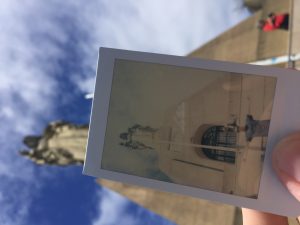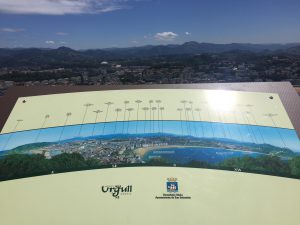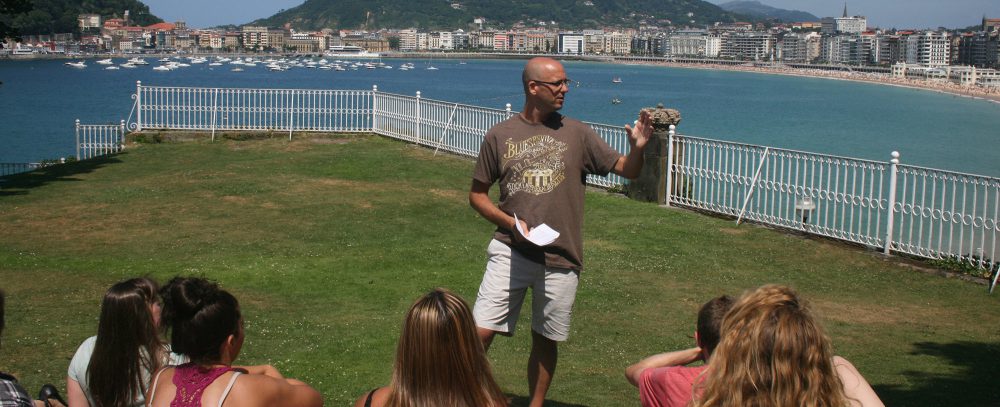Everyday, I start my morning with a nice walk to Spanish class that does not highlight the history this city has endured at all. Despite the endless beauty and entertainment found around every street corner, it’s the patience and pride of the locals makes San Sebastián easy to call home for the weeks that we are here. However, the most exciting part of the day begins after Spanish when the city opens up and becomes our classroom.
After class, there seems to be an infinite amount of restaurants and cafés to choose where to get your next pintxo or bocadilla. Today, I decided to eat just a baguette for lunch. The bread made in the local bakery has a distinct freshness that is not mimicked in grocery stores in the United States. After a filling lunch, our group hiked up Mount Urgull and set up class there, isolated from the busy streets and crowded beaches. The hike displayed characteristics of the city’s history. The stairs were excruciating at points and although many tourists and locals make the hike to see the statue of Jesus, the trail does not lose its lush green areas and historic aspects. Along the hike, there were cannons that prove that this city went through some difficult times before it became the safe and accepting place that it is now. Furthermore, the sights from the mountain capture the beauty of the beaches, and the unique architecture that defines the area.
The hike displayed characteristics of the city’s history. The stairs were excruciating at points and although many tourists and locals make the hike to see the statue of Jesus, the trail does not lose its lush green areas and historic aspects. Along the hike, there were cannons that prove that this city went through some difficult times before it became the safe and accepting place that it is now. Furthermore, the sights from the mountain capture the beauty of the beaches, and the unique architecture that defines the area.

Mount Urgull was the perfect location to discuss some of the works of the popular Basque author, Bernardo Atxchaga. We discussed some of his short stories and excerpts such as The Mystery of Four Birds, Obaba’s First American, Esteban Wendell, and Young and Green. Atxaga is one of the few authors who writes his stories in Basque to preserve the language and to pass the story down within his village. Bernardo Atxaga is important to Basque history. Unlike many modern authors, Atxaga does not hesitate to include certain details. He writes about protests in the Basque Country and the struggles that the area has been through. These include the assassination of a young politician and an organization, the ETA, that focused on breaking free from the Spanish Union. The ETA disbanded slowly and was one of the last terrorist organizations to be in Europe. Bernardo Atxaga acknowledges the history of Basque Country through various themes in his story. He repeatedly writes about this idea of being trapped to signify citizens wanting to break away from the Spanish dictator at the time. He also has repeated themes of family and isolation. Atxaga’s themes demonstrate the values of the Basque people that still hold true today as this is a very social city where all of the locals enjoy talking to one another.
To finish my night, I participated in pintxo pote in parte gros of the city. Every Thursday, pintxo pote draws a big crowd as every bar in this part of the city offers a pintxo and any drink for two Euros. Locals and tourists fill the street and enjoy pintxos together while getting to know each other and the servers. Atxaga is an iconic member of this community and it is amazing to be able to live in the setting of much of his work and the discussion atop Mount Iguela prepared me to meet him on Saturday.
